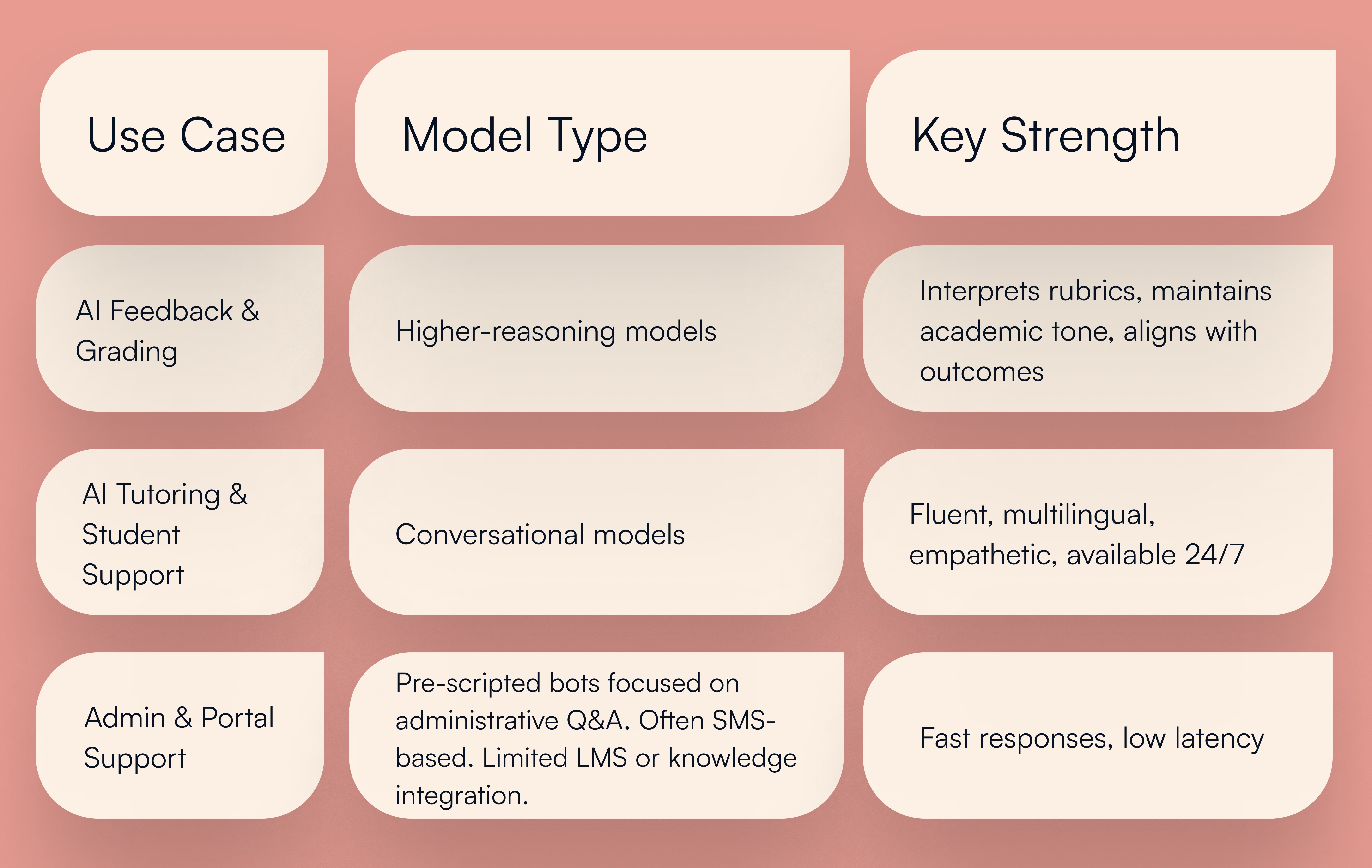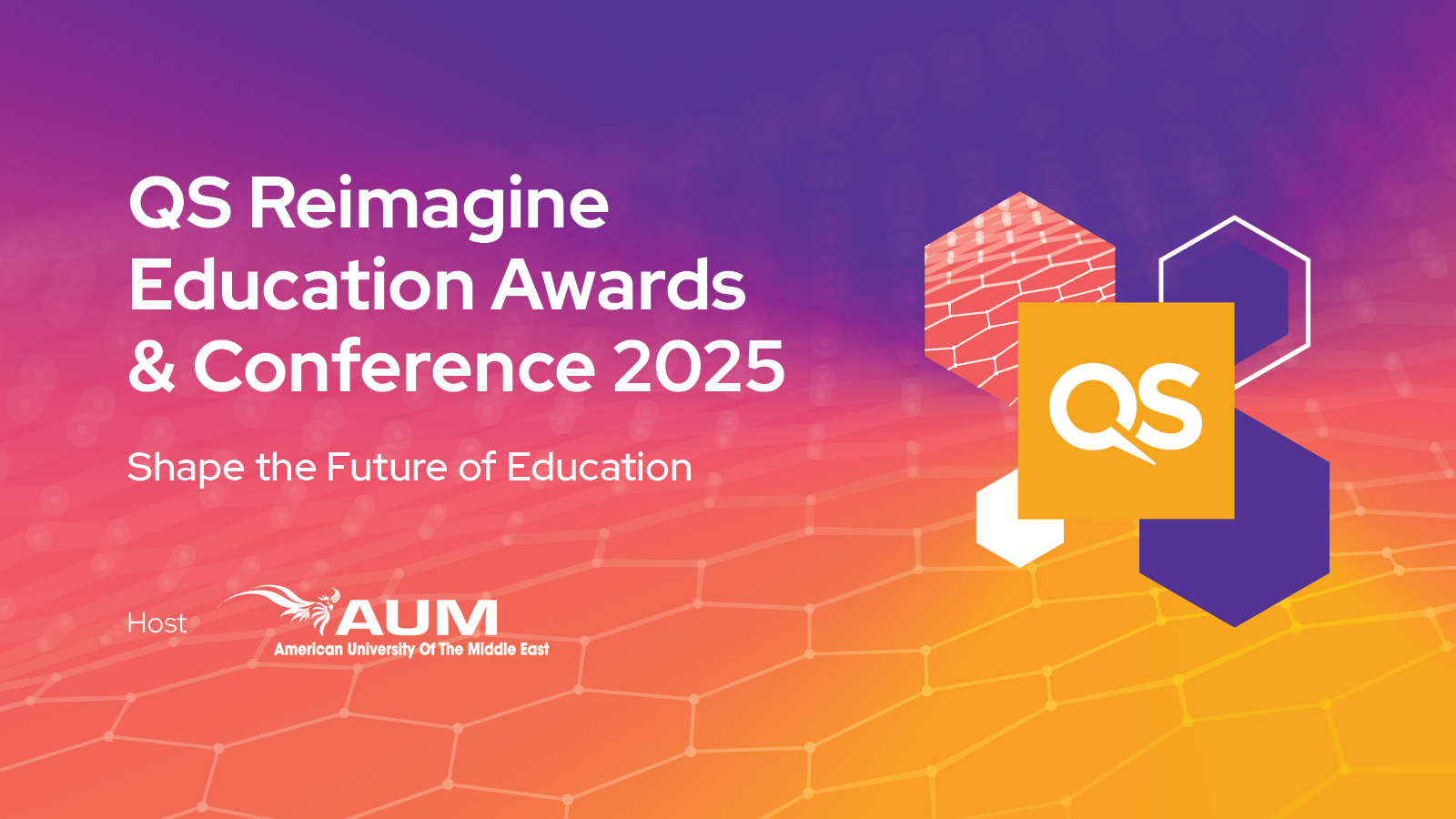How LearnWise AI Uses LLMs Safely: Inside the AI Brain, Evidence-Aware Ranking, and Hallucination Control

The Foundation: A Multi-Model Architecture Built for Higher Education
LearnWise AI was built around a simple principle: no single large language model can meet every institutional need. That’s why its platform is LLM-agnostic, combining multiple models through a proprietary orchestration layer called the AI Brain.
From the Jisc End-of-Pilot Report (2025) and internal trust documentation, LearnWise combines:
- OpenAI GPT models → for general natural-language reasoning, synthesis, and web-referenced tasks.
- Proprietary reasoning models → optimized for structured data, API interactions, and analytic queries.
Overall, LearnWise uses different types of models that have different speeds, latency and performance profiles for different tasks within the answering pipeline. Together, they’re coordinated by the AI Brain, which decides how to answer, ensuring accuracy, citation, and security.
Unlike generic chatbots, LearnWise offers unlimited institutional usage with flat annual pricing, avoiding unpredictable per-token costs while maintaining full data ownership and control.
How the AI Brain Chooses the Best Answer
When an educator or student asks a question, the AI Brain doesn’t rely on majority vote or random selection. Instead, it utilizes a structured pipeline that evaluates each potential answer against evidence and reliability.
Here’s what happens under the hood:
- Query Understanding & Expansion – The user’s question is rewritten 3–4 ways to capture synonyms, intent, and context, then expanded into targeted sub-questions.
- Resource Selection – The system decides where to look: connected content sources (LMSs, portals, drives) or direct API calls to tools like Canvas, Blackboard, or Brightspace.
- Evidence Gathering – Multiple tools run in parallel - structured search, API fetches, document lookups - to produce candidate answers and verbatim evidence snippets.
- AI Ranking – A ranking model scores each candidate using signals such as evidence coverage, citation quality, and retrieval confidence. This is not majority voting; it’s a weighted relevance model with a per-candidate confidence score.
- Answer Synthesis with Citations – The top-ranked candidates are composed into a single reply that cites or quotes the evidence and API facts used.
The result: an evidence-aware, citation-rich response chosen by a ranking engine, institutionally controlled and curated for the most relevant, context-aware answers.
Hallucination Prevention: Built into Every Step
LearnWise doesn’t bolt on hallucination filters after the fact; it mitigates them from the start.
Evidence-First Policy
The system answers only from retrieved content and API facts in real time, not from model “memory.” Each answer is source-grounded and traceable.
Multi-Step Checks
- Query expansion
- Targeted retrieval
- Candidate generation
- Confidence-scored ranking
- Answer synthesis with required citations
Low-evidence or unsupported candidates are automatically down-ranked and excluded.
Continuous Evaluation
The LearnWise backend continuously runs a hallucination evaluation process on logged answers to detect regressions or low-confidence patterns. These are monitored for quality, ensuring output is as reliable and accurate as possible.
Operator Review
Institutional teams can open any message, inspect which snippets or APIs were used, and view confidence per snippet to correct or enrich content. Together, these controls make hallucination prevention systemic, not reactive, ensuring the AI is as trustworthy as the sources behind it.
Data Privacy, Security, and UK Residency
LearnWise meets the highest data-protection standards, verified through the Jisc pilot and the LearnWise Trust Center.
Encryption
- In transit: TLS 1.3
- At rest: AES-256
Data Residency
- United Kingdom: AWS London hosting keeps all UK institutional data within the UK or EEA.
- Other regions: United States, Ireland (EU), Australia, and Canada, with data kept inside the selected region by default.
All data processing complies with GDPR and FERPA. Get full visibility of our subprocessors and cross-border transfers via the Trust Center.
Matching Models to the Right Educational Task
The AI Brain routes tasks to the most appropriate model class based on content type and context. All models are available 24/7.

This modular routing underpins LearnWise’s deep LMS integrations - Canvas, Moodle, Brightspace, Blackboard, SharePoint - verified across 12 UK pilot institutions.
Transparency Where Teams Work
Rather than a separate dashboard, transparency lives inside the Improvement workflow, exactly where support and academic teams operate.
From any message, staff can view:
- The sources and snippets used to generate it.
- Per-snippet confidence scores from the ranking stage.
- A one-click way to flag answers for follow-up, enrichment, or correction.
This approach keeps provenance and confidence tied to content improvement instead of siloed reporting.
Verified Results from the Jisc Pilot
Across 12 UK institutions (further education, colleges & universities):
- 8 of 12 continued using LearnWise post-pilot.
- 100 % answer satisfaction reported in feedback.
- Multi-language deployments (English/Welsh) in production.
- Cross-LMS integrations confirmed.
Educators rated LearnWise outputs as clear, professional, and trustworthy, highlighting accuracy, tone, and time savings.
Why This Matters
Higher and further education need AI that is:
- Reliable: evidence-based, citation-anchored answers.
- Compliant: Aligned with GDPR, SOC 2, and ISO standards, with regional data residency options (including the UK).
- Transparent: confidence scoring and full provenance.
- Cost-predictable: no token billing or hidden usage fees.
- Purpose-built: designed for academic use, not repurposed enterprise chat.
LearnWise delivers AI that amplifies human expertise, rather than replacing it.






.png)
%20(1).png)
%20(1).png)
